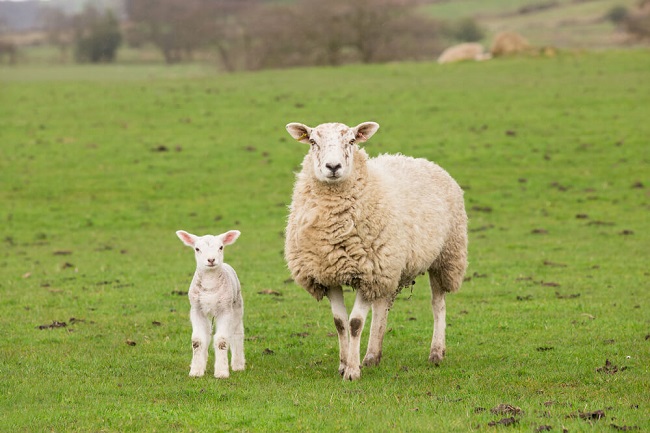Lamb and sheep are two terms often used interchangeably, but they refer to distinct stages in the life cycle of an ovine.
Understanding the difference between lamb and sheep is essential for various reasons, such as meat quality, farming practices, and culinary preferences.
In this article, we will explore the characteristics, age classifications, meat qualities, and farming aspects that set lamb and sheep apart.

What is a Lamb?
A lamb is a young sheep that is typically less than one year old. It is often associated with tender, flavorful meat that is popular in culinary dishes around the world.
Read Also:
What is a Sheep?
Sheep, on the other hand, refer to the mature members of the ovine family. They are older than one year and can be utilized for various purposes, including wool production and breeding.
Age Classifications
Age plays a significant role in differentiating between lamb and sheep.
Lamb
A lamb is generally classified based on its age. In most countries, a lamb is considered to be less than one year old. However, some regions may have specific regulations regarding the age threshold for lamb classification.
Hogget or Yearling
Once a lamb reaches one year of age, it is often referred to as a hogget or yearling. At this stage, the meat may be slightly more mature and flavorful compared to lamb.
Mutton
A sheep that is more than two years old is often classified as mutton. Mutton meat tends to be more robust and has a distinctive flavor compared to lamb.
Meat Qualities and Culinary Uses
The age of the animal can significantly influence the taste, texture, and culinary uses of lamb and sheep meat.
Lamb Meat
Lamb meat is known for its tenderness, mild flavor, and delicate texture. It is favored for its versatility in various recipes, such as grilling, roasting, and stewing. Lamb dishes are popular in many cuisines worldwide, including Mediterranean, Middle Eastern, and Indian cuisines.
Mutton Meat
Mutton meat is more robust and has a richer flavor compared to lamb. It is often preferred for slow-cooking methods, such as braising or curries, to enhance its tenderness and develop its complex flavors. Mutton dishes are commonly enjoyed in traditional British and Asian cuisines.
Farming Practices
Different farming practices may be employed depending on whether the focus is on lamb or sheep production.
Lamb Farming
Lamb farming primarily focuses on raising lambs for meat production. It involves careful breeding, nutrition, and management to ensure the development of tender, high-quality lamb meat.
Sheep Farming
Sheep farming encompasses various aspects, including wool production, breeding, and potentially meat production. The focus may shift from primarily meat production in lambs to the utilization of mature sheep for wool, breeding purposes, or other agricultural applications.
Read Also:
Conclusion
Understanding the difference between lamb and sheep is crucial for various aspects, including culinary preferences, farming practices, and consumer choices. While lamb refers to young sheep less than one year old, sheep encompass the mature members of the ovine family.
Lamb meat is known for its tenderness and mild flavor, while mutton offers a more robust and distinctive taste. By recognizing these distinctions, consumers can make informed choices, and farmers can implement appropriate practices for lamb and sheep production.
























